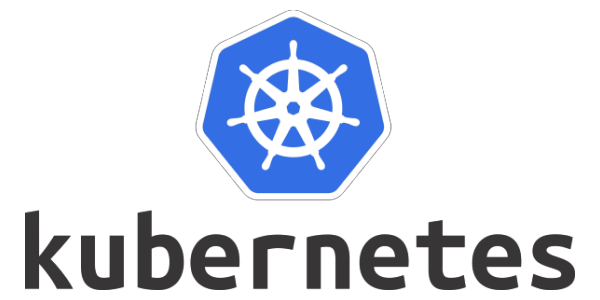Kubernetes, routinely truncated as K8s, maybe an able device for managing containerized applications. This modifies the application course of action, scaling, and course of action over clusters. This article demystifies Kubernetes and clarifies its center concepts and how it’ll revolutionize holder instruments. Whether you’re present-day to Kubernetes or looking to create your understanding, this coordinate gives an in-depth graph of Kubernetes and its benefits.
“Kubernetes is more than just a container orchestration system; it’s a platform for building platforms.” – Kelsey Hightower
Key Concepts of Kubernetes
Containers vs. Virtual Machines
Containers and virtual machines (VMs) are both used for virtualization but differ in their architecture and use cases. While VMs virtualize hardware to run multiple operating systems on a single physical machine, containers virtualize the operating system to run multiple isolated applications on a single OS instance.
Pods: The Basic Unit of Deployment in Kubernetes
A pod is the smallest deployable unit in Kubernetes, representing a single instance of a running process in your cluster. Pods can contain one or more containers that share resources and networking.
Services: How Kubernetes Manages Networking for Your Application
Services in Kubernetes provide a way to abstract and expose a set of pods as a network service. They allow you to decouple the frontend and backend of your application and provide load balancing and service discovery.
Deployments: Managing Application Updates and Scaling
Deployments in Kubernetes define a desired state for your application and manage the deployment and scaling of pods to achieve that state. They provide features like rolling updates and rollback, making it easy to update your application without downtime.
Architecture of Kubernetes
Master Node: Control Plane Components
The master node in Kubernetes hosts the control plane components that manage the cluster. These include the Kubernetes API server, scheduler, controller manager, and etcd, which is a distributed key-value store used for storing cluster data.
Worker Nodes: Where Your Applications Run
Worker nodes in Kubernetes are responsible for running your applications. They host pods, which are the units of deployment in Kubernetes. Each worker node runs a kubelet process that communicates with the master node and manages the pods on that node.
Kubelet, Kube-Proxy, and Other Key Components
Other key components in Kubernetes include kubelet, which is responsible for managing pods on a node; kube-proxy, which is responsible for network proxying; and the Container Runtime, which is responsible for running containers.
How Kubernetes Works?
Understanding the Control Loop
The control loop in Kubernetes continuously monitors the cluster’s current state and compares it to the desired state defined in your Kubernetes objects. It then makes adjustments to the cluster to bring it closer to the desired state.
Container Lifecycle Management
Kubernetes manages the lifecycle of containers in your cluster, including starting, stopping, and restarting containers as needed. It also provides features like health checks and liveness probes to ensure that your containers are running correctly.
Service Discovery and Load Balancing
Kubernetes provides built-in service discovery and load balancing for your applications. Services allow you to expose your pods to other parts of your application or to the outside world, while the Kubernetes service proxy handles load balancing between pods.
Kubernetes in Action
Deploying an Application on Kubernetes
To deploy an application on Kubernetes, you define the desired state of your application in a Kubernetes manifest file and use the kubectl command-line tool to create the necessary Kubernetes objects. Kubernetes then takes care of deploying and managing your application.
Scaling Your Application
Kubernetes allows you to scale your application manually or automatically based on metrics like CPU utilization or custom metrics. You can scale your application horizontally by adding more pods or vertically by increasing the resources allocated to each pod.
Updating and Rolling Back Your Application
Kubernetes supports rolling updates, which allow you to update your application without downtime by gradually replacing old pods with new ones. If a deployment fails, Kubernetes supports rolling back to a previous version of your application.
Advanced Kubernetes Features
StatefulSets: Managing Stateful Applications
StatefulSets in Kubernetes are used to manage stateful applications that require stable, persistent storage. StatefulSets ensure that pods are created in a specific order and that each pod has a stable network identity.
DaemonSets: Running a Copy of a Pod on All or Some Nodes
DaemonSets in Kubernetes are used to run a copy of a pod on all or some nodes in your cluster. They are typically used for system daemons or monitoring agents that need to run on every node.
Custom Resource Definitions (CRDs): Extending Kubernetes with Custom Resources
CRDs in Kubernetes allow you to extend the Kubernetes API with custom resources and controllers. This allows you to define and manage custom resources that are specific to your application or environment.
Kubernetes Ecosystem
Helm: Kubernetes Package Manager
Helm is a package manager for Kubernetes that allows you to define, install, and manage applications on Kubernetes. Helm uses charts, which are packages of pre-configured Kubernetes resources, to simplify the deployment process.
Prometheus: Monitoring and Alerting Toolkit
Prometheus is an open-source monitoring and alerting toolkit designed for monitoring metrics and alerts from your Kubernetes cluster. It provides a flexible query language and powerful alerting capabilities.
Istio: Service Mesh for Kubernetes
Istio is an open-source service mesh for Kubernetes that provides advanced networking features like load balancing, service-to-service authentication, and traffic management. It helps you secure, connect, and monitor microservices in your Kubernetes cluster.
Also Read: CCNA Certification: Navigating the Cisco Networking World
Best Practices and Tips
Resource Management
To optimize resource usage in your Kubernetes cluster, use resource requests and limits to specify the amount of CPU and memory that each pod requires. Use horizontal pod autoscaling to automatically scale your application based on resource usage.
Security Best Practices
To secure your Kubernetes cluster, follow best practices like using RBAC (Role-Based Access Control) to restrict access to resources, using network policies to control traffic between pods, and regularly applying security patches.
Troubleshooting Common Issues
When troubleshooting issues in your Kubernetes cluster, use tools like kubectl to inspect the state of your cluster, logs to view container logs, and events to view cluster events. Use monitoring and alerting to proactively detect and resolve issues.
Conclusion
In conclusion, Kubernetes is a powerful platform for container orchestration that simplifies the deployment, scaling, and management of containerized applications. By understanding the key concepts and features of Kubernetes, you can effectively use it to deploy and manage your applications in a cloud-native environment.
FAQs
Q: What is Kubernetes?
Kubernetes is an open-source container orchestration platform that automates the deployment, scaling, and management of containerized applications.
Q: Why is Kubernetes important?
Kubernetes is important because it allows you to deploy and manage containerized applications at scale, making it easier to build and maintain cloud-native applications.
Q: How does Kubernetes work?
Kubernetes works by defining the desired state of your application in a Kubernetes manifest file and using the Kubernetes API to create and manage the necessary resources to achieve that state.
Q: What are some common use cases for Kubernetes?
Common use cases for Kubernetes include deploying microservices-based applications, scaling applications based on demand, and managing containerized batch processing workloads.
Q: How does Kubernetes differ from Docker?
Docker is a containerization platform that allows you to build and run containers, while Kubernetes is a container orchestration platform that helps you deploy, scale, and manage containers in a cluster.




